How Long Does Marijuana Stay in Your System
How long does marijuana stay in your system should not be confused with how long does a marijuana high last. While you might feel stoned for an hour or so, (read: How Long Does a Marijuana High Last) the metabolized THC stays in your system longer, and is detectable via a number of tests.
The Variables for How Long Does Marijuana Stay in Your System
Here’s a list of variables which affect how long cannabis can be detected after consumption:
- How frequently you consume
- What types of cannabis you consume
- Strains and THC Content
- How you consume it
- Smoke
- Vape
- Edible
- Topical
- Your Body Mass Index (BMI)
- Your gender
Cannabis can be detected in a hair follicle test for as long as 90 days or more.
Types of Tests
This table shows the various types of tests which are used to detect cannabis in your system:
| TEST TYPE | EFFECTIVENESS |
|---|---|
| Blood Test | 25 Days + |
| Urine Test | 30 Days + |
| Saliva Test | @ 29 Days |
| Hair Test | 90 Days |
How Long Does Marijuana Stay in your Blood?
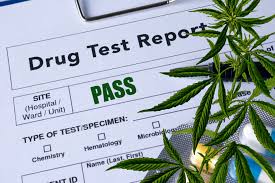 The first thing to know is that cannabis metabolites are fat-soluble. This means they bind to fat molecules which means it can take some time for them to leave your system.
The first thing to know is that cannabis metabolites are fat-soluble. This means they bind to fat molecules which means it can take some time for them to leave your system.
Professional Journals, like Therapeutic Drug Monitoring, suggest cannabis is detectable in the bloodstream basically as soon as it is inhaled. Further, it remains detectable in your blood for up to two or three days; heavy use (daily and chronic) increases the length of time is can be detected in the blood, as much as 25 days or longer.
How Long Does Marijuana Stay in your Urine?
When we continue to look at professional journals, like Mayo Clinic Proceedings, we see that urine holds onto weed metabolites as well.
- 3 days for “occasional” users: up to three times a week
- 5 to 7 days for “moderate” users: four times a week
- 10 to 15 days for "daily” users: daily
- More than 30 days for “chronic” or “heavy” users: multiple times a day
How Long Does Marijuana Stay in your Saliva?
When you smoke or eat cannabis, the metabolites can be present in your oral fluid (saliva) for up to 30 days. In some places where weed is legal, e.g. Michigan, an oral fluid test can be administered for roadside testing.
- For occasional users – up to 3 days
- For chronic/heavy users – up to 30 days
How Long Does Marijuana Stay in your Hair?
Hair tests are the most effective for finding indications of long-term use. The reason is that cannabis metabolites reach hair follicles through small blood vessels and stay there. Human hair grows at about ½ an inch per month, so, the test takes about a 1.5 inch piece of hair from close to the scalp and gets a window into cannabis consumption over the past 90 days.
What’s the Difference between Smoking, Vaping and Eating Cannabis?
Cannabis is metabolized differently depending on if you smoke, vape or eat it. While it's true you'll feel the affect of cannabis quicker is you smoke or vape it, it's also true you'll feel 'high' when you eat it, however, the high you'll feel is 'different' in it's chemical composition than if you smoke it, due to how it's absorbed into your bloodstream.
Regardless of whether you smoke, vape or eat cannabis, the metabolites get stored in body fat.
How much do you have to consume to fail a drug test?
While it’s true that THC tests can detect small quantities of cannabis post-consumption, there are several variables which make it difficult to determine what the 'low-end fail' threshold is.
These variables include the percentage of THC in any given cannabis strain, how much cannabis was consumed and how (smoke, vape, edibles) and how frequently cannabis is consumed (occasional, moderate, daily or chronic/heavy) and other things.
Examples of Test Results
One consistent finding is that the more frequently you use cannabis, the more likely it is you’ll fail, as compared to infrequent users. In one study done several years ago, two groups of cannabis consumers, “frequent” and “infrequent”, were tested after smoking the same strain and amount of cannabis.
Urine Test Results
They were urine tested hourly for eight hours and the results showed the highest concentrations between 30 minutes and 7 hours after consumption. Their highly sensitive test detected THC 100% of the time in the ‘frequent’ users group and 60-100% of the time in the ‘infrequent’ group.
Hair Test Results
Another study done in 2017 found that 77% of heavy users and 39% of light users tested positive in a study using hair samples. In the study, over 100 consumers were broken into three groups: heavy, light or no use. Their hair was sampled and yielded these results. It also showed zero positive tests from the ‘no use’ control group.
Takeaway: How Long Does Marijuana Stay in Your System
At this point in time, there isn’t a way to determine how long it will take to completely metabolize and eliminate THC from their body. In general terms, for most people, it should disappear or be in very low concentrations within 30 to 60 days.
Factors like body fat, frequency of consumption and THC levels within the cannabis all contribute to the complex calculation of your personal metabolism and it’s ability to flush THC from your system.
So, How Long Does Marijuana Stay in Your System
The bottom line is while there are average times, every person is unique and there’s no specific formula to calculate how long weed will be detectable in your system in particular.
The best measurements are:
- Infrequent Users – about 10 days
- Moderate Users – up to 30 days
- Daily Users – up to 90 days
- Chronic Users – over 90 days
Learn More About Cannabis
Book a Happy Travelers Tours educational cannabis tour and get up-close-and-personal with cannabis!
Ultimate Cannabis Vacation Planning Guide
Happy Travelers Tours is proud to present the Ultimate Cannabis Vacation Planning Guide. The Ultimate Cannabis Vacation Planning Guide visits the historical and contemporary Cannabis story in the United States. In it we discuss highlights on the timeline of cannabis 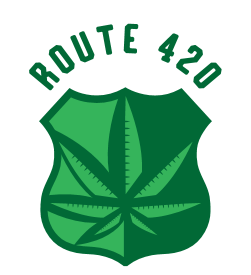 legalization and visit important historical locations to talk about the history of Hemp (and Cannabis) in the United States. Download your Guide!
legalization and visit important historical locations to talk about the history of Hemp (and Cannabis) in the United States. Download your Guide!
We start our Ultimate Cannabis Vacation on the East Coast and work our way from the New England States, thru parts of the South and Mid-West on our way to the West Coast, where we swing up the Coast touching on points-of-interest in California, Oregon and Washington.
While there are several "route 420's" in the USA, our version is fanciful and ties together historical hemp and cannabis landmarks as a way to explore the significance of cannabis in America. Most folks don't know hemp was a required crop during America's formative years. As a seafaring nation, we needed rope, sails and oil for our commercial and naval ships and hemp provided it all! In fact, did you know the USS Constitution (Old Ironsides) used 44 tons of hemp rope in her rigging?
Or, were you aware Pennsylvania was founded with the goal of becoming the hemp production center for the United States? When planning your Ultimate Cannabis Vacation consider what you're looking to do. Are you in search of specific strains of cannabis or are you more interested in learning how hemp and cannabis is grown and what is considered state-of-the-art technology? Whatever your goal is, you'll find information and ideas about how to plan your ultimate cannabis vacation.
How To Use the Ultimate Cannabis Vacation Planning Guide
The Guide is broken into two sections:
- Things to Consider and Adventure on Route 420. In Things to Consider, we discuss the history of
 hemp in the United States and we describe landmark and historical sites of interest.
hemp in the United States and we describe landmark and historical sites of interest. - In the Adventure on Route 420 section, we break-down places and moments in Cannabis history by geographic location and provide state-by-state highlights which focus on cannabis and hemp history and education.
Interested in Learning About Cannabis?
If you're interested in learning about cannabis, we suggest a Happy Travelers Tours cannabis adventure! From our Dispensary Tours to visiting our MountainTop Grow site, our Tours focus on getting up-close-and-personal with cannabis plants while getting educated about this most fascinating plant! Call 707-386-9859 or email: [email protected] for more information!
Download the Guide for Free!
Currently, the Guide is not Gated and so you can download the Ultimate Cannabis Vacation Planning Guide for Free! Please enjoy it and we hope this Guide inspires you to plan your own Ultimate Cannabis Vacation – we’ll see you on Route 420!
Trichomes, what the heck are Trichomes?
Trichomes. You have read about them and you have heard people 'in the know' talking about them, but, what the heck are trichomes?
According to Wikipedia, plant trichomes have many different features that vary between both species of plants and organs of an individual plant. These features affect the subcategories that trichomes are placed into. Some defining features include:
- Unicellular or multicellular
- Straight (upright with little to no branching)
- Spiral (corkscrew-shaped)
- Hooked (curved apex)
- Presence of cytoplasm
- Glandular (secretory) vs. Eglandular
- Tortuous
- Simple (unbranched and unicellular)
- Peltate (scale-like)
- Stellate (star-shaped)
- Adaxial vs. abaxial [referring to whether trichomes are present, respectively, on the upper surface (adaxial) or lower surface (abaxial) of a leaf or other lateral organ]
In a model organism, C. salvifolius, there are more adaxial trichomes present on this plant because this surface suffers from more UV, solar irradiance light stress than the abaxial surface.
Trichomes can protect the plant from a large range of detriments, such as UV light, insects, transpiration, and freeze intolerance.
Cannabis Trichomes
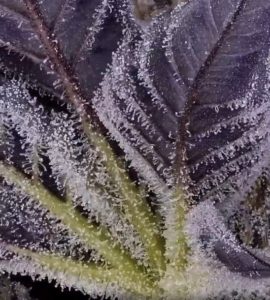 Looking at a multi-colored, frost covered, cannabis flower/bud often causes a cannabis aficionado to pause in anticipatory wonder. For those who haven’t yet learned their way around a cannabis plant, one question comes up frequently: what is the ‘frosty’ stuff?
Looking at a multi-colored, frost covered, cannabis flower/bud often causes a cannabis aficionado to pause in anticipatory wonder. For those who haven’t yet learned their way around a cannabis plant, one question comes up frequently: what is the ‘frosty’ stuff?
If you zoom in on those tiny little crystals you will notice they tend to be shiny, sticky, and ‘stinky’ (or aromatic, if you prefer). What you are looking at are trichomes. In addition to the characteristics described above, trichomes are a cannabis or hemp plants’ way of producing cannabinoids, terpenes and flavonoids: the “things” which makes cannabis plants so fascinating.
Cannabis Trichomes, what the heck are trichomes?
Many plant species produce trichomes, which can take on different forms (straight, spiral or hooked) and can serve different purposes. With cannabis plants, the trichomes help to protect the plant from insects, animals (the trichomes give the plant a taste bitter), UV rays and wind.
The different types of trichomes on cannabis
As noted above, trichomes exist in many shapes and sizes. The three that appear most often on cannabis plants are: bulbous trichomes, capitate sessile trichomes and capitate-stalked trichomes.
- Bulbous trichomes: 10-15 micrometers. These appear on the entire plant
- Capitate sessile trichomes: 15-20 micrometers (slightly larger than the bulbous trichome) and contain both a head and a stalk
- Capitate-stalked trichomes: 50-100 micrometers (big enough to be seen by the naked eye). These consist of a stalk (epidermal and hypodermic cells) which build up to a basal cell that attaches to a gland head. The gland head is the epicenter for cannabinoid and terpenoid synthesis.
While all three types of trichomes produce cannabinoids, it is the capitate-stalked trichomes which, due to their size, produce the highest concentration of cannabinoid resin.
Trichrome Production and Lifecyle
When cannabis plants are exposed to 12 hours of light and 12 hours of darkness (for indoor production) or, on the day after Summer Solstice (when it’s one second less light than it was the day before), they start to bloom. Cannabis plant geneticists call this “auto-flowering”.
Blooming triggers cannabinoid synthesis in the trichomes which culminates with the gland head metabolizing vacuoles and plastids into the precursors of the various cannabinoids found in that specific strain of cannabis. In other words, when the plant starts to bloom, the trichomes begin their ‘journey’ into individual pods of ‘resin’.
The genetic profile of any given cannabis strain drives the rate and concentration of trichome production. The most impactful variable on the concentrations of cannabinoids and/or terpenes is UV light. Growers know that when cannabis plants are exposed to the broadest UV spectrum, the plants, typically, produce higher concentrations of cannabinoids. The other variable is the strain itself, as many strains respond to UV spectrums differently.
Since the trichome’s and plant’s lifecycles are linked, monitoring trichome maturation is a time-testing way to monitor the plant’s lifecycle stage. In other words, the plant is ready to harvest when the trichomes are completely ‘mature’.
What do ‘mature’ trichomes look like? When the plant and trichomes are young, you’ll see mostly clear ‘crystals’. People say cannabis plants look “sparkly”; this is because of the light refracting off all the translucent trichomes on the plant. As the plant matures, the trichome change from clear crystals lying flat on the plant (almost like a fur) to a cloudy white. The other phenomena which is occurring is the trichomes begin to ‘stand up’. In the final, mature, phase, the trichomes are all standing fully erect and have changed from a cloudy white color to a golden or amber.
It is at this stage that the plants are ‘ripe’ and ready for harvest.
Another Method of Determining Harvest Time
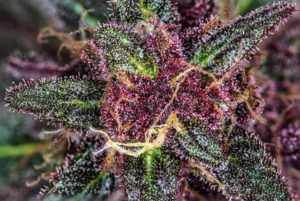 For the sake of completing the conversation, there’s another measurement which can also be used to tell if a plant is ready for harvest, and that is: how old are the plants?
For the sake of completing the conversation, there’s another measurement which can also be used to tell if a plant is ready for harvest, and that is: how old are the plants?
All cannabis plants have a ‘pre-determined’ number of days of growth and ripening coded into their genetics. Typically, grow cycles are 90 to 120 days, starting from when the lights are “flipped” to 12 hours on/12 hours off (for indoor) OR the day after Solstice (for outdoor).
For example, if you are growing outdoors and the stain has a 90 day grow cycle, then, by the calendar, 90 days from June 22nd means that on or about September 22nd the trichomes on those plants SHOULD be completely mature.
Due to environmental and grow technique variables (indoor versus outdoor) trichome coloration is the standard for determining harvest time for most strains.
Trichome Farming
Trichrome farming is the process of focusing on maximizing specific types of trichomes by growing strains rich with those varieties. Long time growers are very familiar with the concept of ‘growing with intention’. In fact, many growers of medicinal cannabis work diligently to propagate strains which are rich in one trichome profile or another.
Cannabis Processing
Clearly, trichomes are critical to the output of carefully grown cannabis, and as such, processing cannabis is also a ‘trichome-centric’ activity. Processing cannabis creates opportunities to capture or extract individual trichomes from the biomass of the cannabis plant.
21st century industrial cannabis trimmers are constructed like a tumble-dry dryer, except, the inside of the ‘tumbler’ is built like a cheese-grater. As the cannabis plant is fed into the trimmer, the machine bounces the biomass around shaking off trichomes (Gasp! No!) while ‘trimming’ cannabis buds to a consistent size and shape.
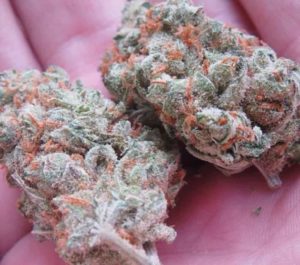 Next time you open a container of processed cannabis, notice how all the buds are similar is size and shape AND that there are, unless it’s been hand-trimmed, NO trichomes sitting on the bud – it’s like the bud had a very tight haircut.
Next time you open a container of processed cannabis, notice how all the buds are similar is size and shape AND that there are, unless it’s been hand-trimmed, NO trichomes sitting on the bud – it’s like the bud had a very tight haircut.
The trichomes which got ‘trimmed’ off the plant are gathered up in a catch-bin for processing (if you hand-trim cannabis, you can sift your buds and shake off “kief”, which are these same loose trichomes.
The biomass which is left over from the trimming process, including stems, leaves and small buds, can then be processed, under pressurized systems, to create concentrates and oils.
Bottom Line: trichomes are important to both cannabis plants and people’s health!
Conclusion
To learn more about trichomes, take Happy Travelers Tours Cannabis Dispensary Tour and get a behind-the-scenes tour of an indoor production facility or Book our MountainTop Grow Tour and get up-close-and-personal with Cannabis Plants. Book your Tour Today!
Does Weed Go Bad?
It’s a classic scenario: you’re out of weed and in your frantic search for more you discover a long-forgotten baggie of buds in a drawer. Victory! Hold on: is the pot still good? Does weed go bad? It smells ‘ok’ and doesn’t crumble to the touch, so, maybe, but, what about mold?
Weed doesn’t go bad like produce or condiments, but, it can, have a noticeable drop in potency. Aging weed can also undergo changes in texture, taste and aroma.
How long does cannabis stay fresh?
Dried cannabis keeps for 6 months to 1 year when stored properly.
According to research, weed loses roughly 16 percent of its THC after 1 year, and it just keeps dropping from there:
| # of Years | % of THC Loss |
|---|---|
| 1 | 16% |
| 2 | 26% |
| 3 | 34% |
| 4 | 41% |
How do I know if my weed is old?
- Smell It.
- Weed that’s past its prime will smell different or lose its aroma entirely
- Look at it.
- Does it look dried out and aged?
- Feel it.
- Fresh weed shouldn’t crumble or feel spongy when you break it off.
- Taste it.
- Tasting a little shouldn’t harm you, but be prepared for changes in texture and potency.
The exception is weed that has grown mold. Obviously, smoking moldy weed is not a good idea.
How do I check for mold?
Look closely!
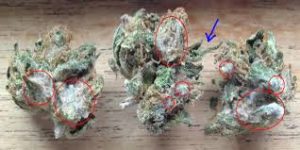 It typically looks like white powdery or fuzzy spots, some of which can be pretty small. Mold is often hard to see unless you look very closely.
It typically looks like white powdery or fuzzy spots, some of which can be pretty small. Mold is often hard to see unless you look very closely.
Moldy weed tends to have a bit of an “off” taste and usually smells musty, kind of like hay.
Mold on weed isn’t likely to cause major health problems, but it can lead to cannabis hyperemesis syndrome symptoms: nausea, vomiting, and coughing.
In people with weakened immune systems, inhaling smoke or vapors from weed containing bacteria or fungi could cause serious illness or even death.
How should I be storing my weed, anyway?
Four factors have a direct impact on cannabis aroma, taste and potency:
- Light
- Humidity
- Temperature
- Oxygen Exposure
What is the right storage container?
Glass jars with an airtight seal, like mason jars, are the way to go. They don’t have any static charge and limit oxygen exposure. Plus, they’re inexpensive and easy to find.
Ditch plastic baggies and containers. Plastic holds static that can affect delicate trichomes and mess with potency.
And your cute stash tins? They let in too much oxygen.
Watch the Humidity
Weed is best kept at a relative humidity of 59 to 63 percent. Any higher and you run the risk of trapping moisture, which can lead to the growth of mold. Anything lower can cause your weed to dry out. Keeping weed in a cool and dry spot away from sunlight is as important as the container you use, if not more so.
Cannabis Humidors
You can also go the extra mile and store your weed in a humidor made specifically for cannabis. There a many brands to choose from; a Google search will get you all the information you need.
Can I use the freezer?
Danger! Putting cannabis into freezing temps can cause trichomes to become brittle and break off. What are trichomes? They’re the tiny hairs on cannabis (and hemp) flowers that produce the cannabinoids which we care about.
Also keeping weed in the freezer can expose it to moisture, especially when ‘defrosting’, which can result in mold.
So, Does Weed Go Bad?
When cannabis is exposed to environmental factors such as light and air, the cannabinoids and terpenes deteriorate. So, the more exposure to these factors increase how quickly it deteriorates, or, goes “bad”.
How to Keep Different Types of Cannabis Fresh Longer
Different storage for different tokes is necessary to keep your cannabis products fresh and potent. Here’s a breakdown by cannabis product type:
Flower
To keep flower fresh, you need to store it properly. This includes limiting exposure to light and open air, and maintaining a proper humidity level, typically somewhere in the range of 54 percent to 63 percent.
To accomplish all this, store your bud in either a small glass Mason jar or a container designed specifically for marijuana. Keep the lid on tight, don’t open it very often, and keep it in a cool dark place.
Vape Pens
Since cannabis oil is already inside an airtight cartridge you don’t really need to worry about humidity or exposure to air, however, it’s best to keep your vape pens away from direct light.
- Store your vape pen standing upright. This will keep all the oil at the bottom of the cartridge which means it’s ready for immediate use.
Concentrates
Typically, the container your concentrate (or Edible) comes in will be the best container to store it in.
Edibles
As mentioned above, to keep edibles fresh, keep them in the original package and store them in a place that’s away from open air and direct light. Be sure they’re in a cool location; gummies and candies can easily melt if you’re not careful.
Does Weed Go Bad Conclusion
Weed can last 'forever', however, after about a year it will begin to age, lose potency and, potentially, develop mold, rendering it not good to smoke.
To learn more, take our Cannabis Dispensary Tour and get a behind-the-scenes tour of an indoor production facility and learn how they store cannabis. Book your Tour Today!
Elevated Wine and Weed Tours – Enjoying the Crossfade Experience
In the new world of wine and weed tours it’s easy to get on the bus and get lifted, as it were. You can experience a wine and weed tour, or mix and match with beer destinations in Sonoma County.
Wine Country Weed Trips
Anyway you cut it, getting on a wine country weed trip is as easy as finding the Tour your like and booking it. The question is: during a day of tasting wine and cannabis, how do you enjoy the crossfade experience?
Enjoying the Crossfade Experience
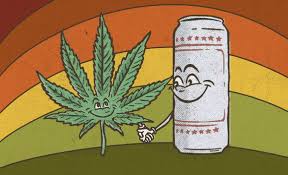 What does ‘crossfade experience’ mean? It’s when someone consumes both alcohol and cannabis at the same time.
What does ‘crossfade experience’ mean? It’s when someone consumes both alcohol and cannabis at the same time.
There’s an art to doing this and if you’ve never mixed the two before, you might want to go slow because instead of feeling ‘elevated’, you might end up feeling nauseated or worse.
How can the crossfade be enjoyed? Moderation! Yes, in the new world of wine and cannabis tourism, the temptation to taste as much as possible looms large. One way to ensure maximum enjoyment is to not mix within groups, and by this we mean: if you’ve been drinking wine, don’t switch to beer.
Likewise, if you’ve been smoking or vaping cannabis, don’t also munch down an edible or wash down your lunch with a cannabis-infused beverage!
Knowing Your Limits
One very effective way of enjoying the crossfade experience is to limit how much you consume. Instead of having a third glass of wine and smoking another joint, what if the ‘buzz you’re at” is fine? Check in with yourself and your friends – figure out when ‘too much is just enough’ and when it’s too much.
The MountainTop Wine-and-Weed Tour
Happy Travelers Tours specializes in cannabis education and our primer format for this is our nationally recognized MountainTop Wine-and-Weed Tour. The views on this Tour are spectacular and guaranteed to put a smile on anyone’s face who enjoys weed, wine and nature.
And, being in nature, where you can walk around and metabolize the wine and weed means, you’re more likely to enjoy your crossfade experience and the commonalities between cannabis and wine.
The Cannabis Dispensary and Wine Tasting Tour
There’s another way to enjoy a crossfade experience in Sonoma County and that’s on the Cannabis Dispensary and Wine Tasting Tour with Happy Travelers Tours.
This Tour visits a dispensary and indoor grow operation so Guests can get the cannabis education they want (and purchase cannabis products for later consumption) and then visits two wine tasting rooms for a catered lunch and a glass (or two) of Sonoma County Wine.
Which Comes First
While there has only been some initial clinical research into the crossfade experience, there are plenty of anecdotal experiences which suggest that smoking cannabis first and then consuming alcohol has a better “satisfaction” rating than drinking alcohol and adding weed on top.
It has to do with the way human bodies metabolize both substances and the fact one is ‘numbing’ part of the brain while the other is opening mind consciousness. The 'best practice' (as it were) is to:
- Smoke or vape some cannabis
- Enjoy a Glass of Wine or Beer
- Sit Back, Relax and Enjoy the Crossfade
What Is a Canna-Curious Adventurer To Do?
Book a MountainTop Wine-and-Weed Tour or a Cannabis Dispensary and Wine Tasting Tour with Happy Travelers Tours and enjoy the best crossfade experience that Wine and Weed Country has to offer.
Big Weed and Craft Cannabis
Whether you call it Big Weed and Craft Cannabis or Corporate Marijuana and Artesian Weed, there’s a huge shift in the cannabis industry which is driven by legalization and regulation. As more and more states open up to medical and recreational cannabis, the local players (legal, grey and black market) are all vying for: growing spaces, skilled resources and money.
The Hard Reality
In 2020 the economies of scale will be more important than ever for cannabis companies. More acreage will be planted by sophisticated growers with lots of money, which will drive down the prices and squeeze smaller, struggling, producers. This is the price of Big Cannabis.
How will Smaller Producers Survive?
 Artisanal cannabis cultivators always have differentiated their brands by producing exceptional quality cannabis; this allows them to command premium pricing, making their extra effort worthwhile. This trend will continue in 2020 along with sustainable and ‘social purpose’ brands. These product categories are growing in popularity as customers become savvier consumers.
Artisanal cannabis cultivators always have differentiated their brands by producing exceptional quality cannabis; this allows them to command premium pricing, making their extra effort worthwhile. This trend will continue in 2020 along with sustainable and ‘social purpose’ brands. These product categories are growing in popularity as customers become savvier consumers.
In addition to the demand for ethical, green, products, cannabis tourism is growing in popularity and, especially for hemp producers, the opportunity to host Guests at Farms expands in 2020 and provides a unique revenue stream.
2020 will not be easy for most cannabis operators. In addition to the shift which looms with Federal legalization, the COVID-19 new ‘normal’ will impact every aspect of cannabis production, from growing and processing to retail and even consumption.
Let’s Define Craft Cannabis
To understand the dangers a craft cannabis company faces, it helps to understand how industry stakeholders define “craft.”
Generally, it comes down to a set of factors which are based on how craft brewed beverages are defined:
- The business is majority-owned by locals and also sources its inputs locally, produces locally and employs locals.
- The business produces a smaller amount of product compared to larger competitors. (Exact numbers haven’t been defined.)
- The business stresses values – such as compensating employees well and contributing to the community – and puts them ahead of the bottom line.
- The business uses only organic or natural products and environmentally friendly methods.
- Growers, processors and other employees are able to offer personal care to individual plants and products that larger operations can’t provide.
What Experts Say
“Craft weed is artisanally produced, smaller-scale cannabis that is grown on family farms. That is in contrast to the rise of what I describe as Big Marijuana, which is large-scale cultivation of cannabis typically in massive outdoor fields or in large warehouses.
I think California is probably on the forefront of a lot of these issues, especially from a cultivation standpoint, which makes sense because they’re the largest producer of cannabis in the US. But they have been thinking about these issues, like sustainability and environmental regulations, for a long time.
The California Department of Agriculture is moving forward with an appellations project that would certify designations of origin. And historically, they have promoted small-scale farming by having an acreage limit on cannabis farms. You could only grow up to one or two acres of plant canopy depending on the type of permit you have. I think they’re thinking about this in a lot of really good ways”
Ryan Stoa, author Craft Weed
And Let’s Not Forget About Hemp
Hemp, the source for CBD in many non-psychoactive products, will expand internationally as well, driven by the CBD’s demand. The CBD market will grow to $2.1 billion in consumer sales by 2020 according to the Hemp Business Journal, with $450 million of those sales coming from hemp-based sources.
(source: Forbes.com)
Craft and Commercial
Just as there are hybrid strains of cannabis, so goes the cannabis industry – a hybrid of Corporate Weed along side Craft Cannabis. This landscape is identical, in fact, to the Wine and Beer industries.
Given how similar Craft Cannabis is to Craft Beer and Wine, can the normalization of cannabis consumption be far behind? Will Corporate America ever acknowledge the ‘two bowl lunch’?
What’s a Consumer to Do?
Seems like the best plan going forward is to buy what you want to buy, depending on where you live or are visiting. If you’re in an area like Northern California’s Wine and Weed Country, you can jump on board Happy Travelers Tours Dispensary Tour and enjoy the best of both worlds.
Book a Tour
Happy Travelers Tours navigates both the Commercial and Craft Cannabis worlds. Book a Tour today and get up-close-and-personal with cannabis plants.
Cannabis Education Tours and Party Bus Tours
What makes cannabis education tours and party bus tours different? Mostly everything! The goal of cannabis education tours is to normalize consumption and de-stigmatize cannabis use. At Happy Travelers Tours we also introduce new and experienced consumers to the inside world of cannabis and cannabis production.
A party bus is pretty much self-explanatory. For the purposes of this post, party busses let Guests consume cannabis (either personal stash or after a stop at a dispensary) while the bus is in motion. Typically, Party Busses stop at dispensaries and cannabis operations and either wineries or breweries.
Note: many party bus tour guests report they're too inebriated to get home safely and need a designated driver.
In Sonoma County there are a couple of expensive party bus tours. However, there's only one Sonoma County-based cannabis education tour, Happy Travelers Tours.
Happy Travelers Tours
Established in 2018, we're very proud Happy Travelers Tours is the original Sonoma County cannabis tour focused on supporting our local cannabis community. By providing Certified Tourism Ambassadors on every Tour, we bring quality education, history and cannabis information directly to our Guests.
Our nationally recognized MountainTop Wine-and-Weed Tour puts you up-close-and-personal with Cannabis. Book your Tour Today and get up-close-and-personal with cannabis plants!
Cannabis Education Tours for Education Professionals and Medical Practitioners
 A Happy Travelers Tours cannabis education tour puts Guests up-close-and-personal with cannabis. These educational Tours are designed to help professional educators develop progressive curriculum advancing Cannabis Education.
A Happy Travelers Tours cannabis education tour puts Guests up-close-and-personal with cannabis. These educational Tours are designed to help professional educators develop progressive curriculum advancing Cannabis Education.
Medical practitioners who wish to better understand the cannabis industry will benefit as well. Our goal is to provide educators and medical professionals with a solid foundation and overview of the contemporary Cannabis Industry in California.
With our exclusive five activity itinerary, our cannabis education tours focus on getting up close and personal with cannabis. On Tour our Guests learn:
- How to grow and process cannabis
- What types of ‘finished’ products are available
- How to safely consume cannabis, and
- A two-part hands-on session about cannabis economics post-legalization. Our Guests work with cannabis and learn about production. This part of our experience is the highest (pun intended) rated part of our itinerary!
Download our Ultimate Tour for Cannabis Educators and Medical Professionals Guide!
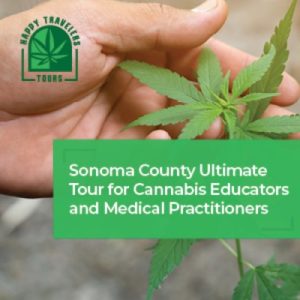 Information for Educators
Information for Educators
If you’re looking to build curriculum for a class at your school or university and/or if you’ve made the decision to finally learn about the rapidly changing cannabis industry, join Happy Travelers Tours on our Cannabis Grow tour and get the cannabis education tour you deserve! And, when the day is done, you'll have enough information to generate a course outline! Email: [email protected] for more information.
Information for Medical Professionals
Medical Practitioners: if you prescribe cannabis, do you want to know more about production and the supply chain? While our Tours focus on educators, medical practitioners will gain real-world knowledge that will help them more confidently prescribe cannabis as a treatment option.
The New Wine and Weed Country
Happy Travelers Tours is a Sonoma County-based company which is a locally owned and operated cannabis tour company run by Wine and Weed Country natives. Our up-close-and-personal cannabis experiences bring Guests directly into the Sonoma County Cannabis Community and the California Cannabis Lifestyle because our business 'grew' directly from this close-knit community.
Our Team of Sonoma County locals take you behind the scenes of the legal cannabis marketplace: from growers to production to retail, Guests meet with some of the best operators in NorCal while enjoying beautiful, scenic, wine and weed county, Sonoma County style.
The best part is: all of our education partners are 'deep roots' cannabis community members here in Sonoma County. When you're on a Happy Travelers Tours experience, you meet folks who are the 'real deal'.
The Most Unique Team Building Experiences
What makes a good Team Off-Site Experience? Is it about building communication and inter-personal skills? What about creating a lasting impression or building a life-long workplace memory?
If you’re looking for a unique team off site, Happy Travelers Tours has the experience for you! We’ll visit an indoor growing operation and enjoy a custom ‘back-room’ Tour. From the Tour we’ll move through their retail operation to learn about Cannabis Point-of-Sale marketing.
In addition to spending time exploring cannabis production we provide a catered lunch and finish our day with a picnic and wine tasting, in true wine weed country fashion.
- Add-on Activities and Special Guest speakers are available to ‘brand’ your Team Off-Site with your stamp-of-approval.
- More information is available by emailing: [email protected]
Recreational Cannabis Experiences
One way to spend a perfect day in wine and weed country is to get on Happy Travelers Tours Dispensary and Winery Tour. Why? Because you can explore scenic vineyards and enjoy a wine (or beer) tasting experience and get up close and personal with cannabis plants, all while experiencing the best in Sonoma County Dispensaries.
So, if you’re looking for some west coast cannabis while on a Sonoma County wine country vacation, hop on board a Happy Travelers Tours Dispensary Tour and enjoy a truly unique and memorable experience.
Schedule an Experience Today!
Follow these links for more information about Happy Travelers MountainTop Grow Tour or our Dispensary and Winery Tours. Book or schedule an experience today or call 707-386-9859 for more information! Or download your copy of the Ultimate Cannabis Vacation Guide today!
California Black Market Cannabis
California Black Market Cannabis (or the grey market for that matter) is booming despite legal cannabis being available in the state. Why is California Black Market Cannabis thriving? Simple. Most of California is a Pot Desert.
What? How can that be? California allows counties and cities within counties to make local cannabis policies, and, because of this, most of California restrict dispensaries in their communities. So, without a local dispensary, how does a legal consumer get legal cannabis?
Delivery Services
Only via cannabis delivery services. And, if you live outside of a delivery service zone, what do you do then? Well, you’ll either have to travel to where you can get legal weed or you’ll have to reach out to the grey market and get it from the guy you’ve known for years.
Grey Market versus Black Market
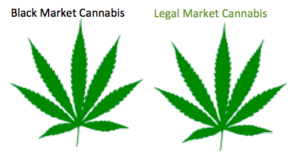 Gray market is a label applied to cannabis outlets behaving and advertising themselves as legal businesses with only some or none of the required business certifications legally required to sell cannabis. Gray Market operations may possess a legal state business license and even rent and pay taxes for a physical storefront, but they are still strictly illegal operations because they don’t follow their jurisdictional regulation on the sale of cannabis.
Gray market is a label applied to cannabis outlets behaving and advertising themselves as legal businesses with only some or none of the required business certifications legally required to sell cannabis. Gray Market operations may possess a legal state business license and even rent and pay taxes for a physical storefront, but they are still strictly illegal operations because they don’t follow their jurisdictional regulation on the sale of cannabis.
Another example of the grey market is when someone buys pot from another person who is growing for personal use. Anyone in California can grow up to six mature cannabis plants. Some of the people who grow for personal use are very good growers and, in many cases, their six plants produce many pounds of weed, far more than they will personally consume.
When a ‘personal use’ grower sells cannabis to someone, that is a grey market transaction and it supports the illegal cannabis industry.
Grey vs. Black
So, what’s the difference between grey market cannabis and black market cannabis? Black market cannabis is often grown in old-style “guerilla grows” where the growers are squatting on someone else’s land (or on the State or Federal Government’s land) and their intention is purely economic. They’re growing for money and have no regard for how they treat the land or what the put on the plants to get them from seedling to harvest.
One other common characteristic of black market grows is the growers are criminals; in some cases gangs and in some cases cartels. Regardless, some sound advice is: don’t buy black market weed.
Back to the Black Market Dispensary
Another characteristic of a black market dispensary is the way they source their products. While it might be packaged appropriately and look legitimate, the product itself was (most likely) not produced with the “track and trace” system and this means the cannabis was not tested throughout it’s grow cycle for trace residues of chemicals, pesticides and other impurities (e.g., mold).
Again, we fall back to: don’t buy black market weed.
Black Market Cannabis Bad, Grey Market Cannabis LESS Bad?
Local laws allow cities and counties to outlaw cannabis sales (and commercial production) or limit how those business can operate. Because of this, huge parts of California are “dry” and getting legal weed just isn’t practical.
This is why no other state which has recreational cannabis is experiencing the same black market cannabis issues California has.
Part of the issue is the way businesses can operate online – it’s impossible to distinguish legitimate cannabis retailers from black market operators online. One observation about this is: most grey market operations DON’T advertise online.
Where Is the Grey Market?
Less than 25 percent of the Golden State's cities allow legal sales. So, everything else is either black or grey market. But, if the grey market doesn’t advertise, where IS it?
Rewind 10 years – the grey market is the guy you went to when you wanted to buy some cannabis. Typically THIS cannabis was being grown for medical purposes and your ‘retailer’ had access to inventory (or was the grower) and was “slinging” some bags on the side.
These guys didn’t advertise then and they don’t do it now, but, they’re still part of the grey market. So, you either know a guy, or you know someone who knows a gal or you still have your buddies from ‘back in the day’ and they’re still doing what they do best.
In any case, the grey market is the market where you gotta know someone to get in. And, from the point of view of the Bureau of Cannabis Control, the grey and black markets are indistinguishable from each other.
What is California Going to Do?
2020 is the year the California Bureau of Cannabis Control has increased it’s enforce budget specifically to deal with black market cannabis dispensaries and growing operations. What impact it will have remains to be seen.
It turns out, as much as 80% (!) of cannabis sold in California has come from the black market, with an estimated value of $3.7 billion in 2019. That is four times the value of the legal cannabis market and illustrates the magnitude of California’s black market cannabis problem.
To learn more about the Legal Cannabis Market, Book a Cannabis Dispensary Tour with Happy Travelers Tours!
Cannabis Tolerance Break
Take a Cannabis Tolerance Break? What? Are you kidding me? The first time you smoke cannabis might be the most memorable of your experiences. Over time, you might wistfully recall that first experience and wonder why you don’t seem to get as stoned as you once did.
This is due to the development of a tolerance level, and, as with any mood altering substance, the way to re-set your tolerance levels is to take a cannabis tolerance break. How long a break will depend on the individual, some folks feel refreshed after just a couple of days and other folks want to go a couple of weeks or longer.
It really just depends on you, your use case and your personal goals.
What is a Cannabis Tolerance Break
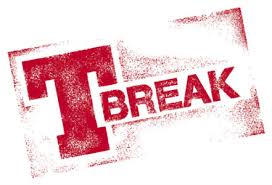 A T-Break, slang for a tolerance break, is a short-term (a few days to a few weeks) break from cannabis consumption so your body and clear the cannabinoids from your system. Two quick notes about this:
A T-Break, slang for a tolerance break, is a short-term (a few days to a few weeks) break from cannabis consumption so your body and clear the cannabinoids from your system. Two quick notes about this:
- If you drink water as your daily primary beverage, you are helping to flush your system of cannabinoids to some degree, but, periodically, to really clear your system, you will also want to take a t-break
- Drinking more than eight glasses of water per day (as part of your normal, healthy lifestyle) helps with the natural detox process.
- Past Research. There are research studies which have determined that folks who consume cannabis on a ‘chronic’ or regular basis, do, in fact, build up a tolerance over time.
How Do You Take a Cannabis Tolerance Break?
Depending on your consumption frequency and how strong the cannabis strain is (and the relative THC/CBD ratio’s of your favorite bud), you might end up ‘highly’ tolerant of that cannabis and, one way to reduce your tolerance is to either take a cannabis tolerance break OR change up what you’re consuming … try a different strain of marijuana or vape some concentrates instead of smoking pot.
Changing up your consumption routine can also help reduce your tolerance levels, so, if you’re typically a “wake and bake” type of person, you might consider holding off that first blast until lunch time or, if you can swing it, later in the day.
On the other hand, if you feel the best way to detox your system is to take a cannabis vacation, then, we recommend you follow your gut and do that very thing: take a cannabis vacation and let your body clean itself out.
Reasons to Take a Tolerance Break from Cannabis
There’s a whole bunch of reasons why you might take a break from cannabis. Some of them are personal choices and some of them are situational choices.
Let’s take a look at some of the reasons to take a cannabis vacation:
- New Job = Drug Test
- Court Orders or Other Legal Requirements
- Traveling to states or countries which are not cannabis-friendly
- Money (cannabis ain’t cheap, even if it does grow on trees)
- Fasting and other Spiritual Reasons
One thing is almost certain: taking a cannabis tolerance break can result in a new, refreshed, outlook on cannabis and other things. Remember: cannabis is part of life, not the reason for it!
How Long Should a Cannabis Tolerance Break Last?
Here’s a chart with some information about t-break durations:
| DURATION | EFFECT |
|---|---|
| A Few Days | Abstaining for a few days will result in noticing some of the more profound effects of cannabis when you consume again |
| Two Weeks | Taking a two-week cannabis vacation allows your body to flush cannabinoids and your lungs to get a healthy break |
| 30 Days or More | To completely clear your body and system of any built up cannabis residue (which store in fat cells), you need to take a cannabis tolerance break for at least 30 days |
What Should Consumers Expect on a Cannabis Tolerance Break?
This seems to be obvious. You should expect to do all the things you’ve been doing, just without being stoned. So, continue to stay active and drink 64 ounces of water a day. Do what you usually do: work out, play music, go to work, take care of your family … you get it: live your life, just without smoking any weed!
The Difference Between Recreational Use and Medical Use and a Cannabis Tolerance Break
While both recreational and medical cannabis consumers can be “chronic” in their consumption, people who smoke medical marijuana are, typically, using their medicine per some direction from a health care professional, and, as such, should speak with their Doctor or clinician before they ‘titrate’ off their current cannabis doses.
Chronic recreational consumers might consider a cannabis tolerance break to clean out their systems and let their chemical balances ‘re-set’. The truth about cannabis is it is not physically addictive (like an opiate) however, depending on the individual user, there are psychological dependencies to consider.
Again, if you’re consuming cannabis per a Doctor’s recommendation, then, we suggest you speak with your Doctor before taking a cannabis tolerance break.
The Difference Between Chronic, Medical and Recreational Consumption
Let’s define some terms:
- Chronic: Someone who consumes cannabis on a ‘chronic’ basis, meaning, several times per day.
- Medical: This type of consumption is done on a schedule and under the direction of a Doctor. This means the medicine which is consumed (including, in some cases, the strains and the CBD/THC ratio’s – think “Charlotte’s Web”) is done so under a Doctor’s supervision.
- Recreational: The classic examples of chronic recreational users are the gang from ‘Fast Times at Ridgemont High’ and ‘Cheech and Chong’. If you smoke as much cannabis as any of these guys you are definitely a Chronic Consumer.
It makes sense the more you smoke cannabis the more important it is to take a t-break now and then, so, we’re going to focus on the group of consumers known as ‘chronic’ consumers.
There’s no single definition of ‘chronic’ consumption, however, if the AVERAGE cannabis consumer in the United States only smokes on occasion (one report indicates this to be 12 days a year) then, anyone who smokes more frequently than 12 days a year would be a heavy, or ‘chronic’ consumer.
For the purpose of this post, let’s say a ‘chronic’ consumer is someone who smokes some cannabis daily.
Chronic Medical
If you’re consuming medical cannabis then, as discussed above, we recommend you speak with your doctor before engaging in a cannabis tolerance break. You Doctor might prefer you to consume a different strain or use a vape instead of smoking especially if your medicine helps with mood or physical issues.
Chronic Recreational
If you find yourself ripping bong loads for breakfast and finishing your day with something from the dab rig, you might consider taking a cannabis tolerance break on a regular basis. Perhaps taking a two or three day t-break every two months.
The bottom line on cannabis vacations is this: you should consider taking one when you feel like you’re not getting the ‘bang for your buck’ when you smoke weed.
Disclaimer!
For the record, we are neither medical professionals nor are we your parents, but you already knew this!
If you’re interested in learning more about cannabis, cannabis culture and the cannabis lifestyle then consider booking a tour with Happy Travelers Tours!
Cannabis is an Essential Business
The stories are out there: cannabis is an essential business, pot deliveries boom during pandemic, curb-side services now available and, even, drive-through cannabis dispensaries!
It’s almost unbelievable how critical cannabis has become, all of a sudden, to the point that many communities are keeping dispensaries open (while closing libraries, restaurants and movie theaters).
Go Figure!
10 years ago, heck, 10 WEEKS ago, cannabis as an essential business would have been inconceivable and today, “everybody must get stoned” (thanks, Bob Dylan!).
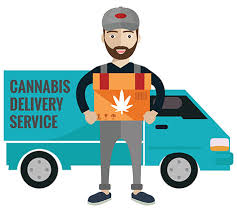 Across the country, state after state has determined marijuana and hemp to be an ‘essential’ part of life. This is a huge validation for the industry; with this new status has come a surge in sales as consumers stock up on the weed they need to get through these most trying of times.
Across the country, state after state has determined marijuana and hemp to be an ‘essential’ part of life. This is a huge validation for the industry; with this new status has come a surge in sales as consumers stock up on the weed they need to get through these most trying of times.
Many states have changes their cannabis rules to allow for either delivery or curbside pickup (or both). Considering how glacially marijuana laws have changed historically, it will be very interesting to see if states try to “back-pedal” from these rules when the pandemic dies down.
Given cannabis delivery has become the best way to purchase cannabis, it seems reasonable to presume delivery services will be an industry standard nation-wide from this point on.
Things to Think About
It’s fascinating the way previously “un-movable” positions taken by states and local governments have given way to the notion that cannabis is an essential business and cannabis delivery is an important business function. Pretty sure there’s some “confused” law enforcement officials who are now scratching their heads in wonderment.
One of the things about smoking (or vaping or eating) cannabis is, for the most part, it’s a social thing. Now, clearly, there are people who use cannabis for medical reasons and their use cases are, mostly, different than an average recreational user (we’re not talking about chronic consumers) in that, medical marijuana is often solitarily consumed.
However, on the recreational side of cannabis use, many people enjoy consuming cannabis in groups or, in many cases, sharing a smoke with someone else.
Consuming Cannabis During a Pandemic
This is a tricky thing, especially with a Respiratory Virus. Presuming you’ve been “sanitizing” every thing you’ve been bringing into your home since SIP was implemented in your area, then, those same protocols should be used when bringing packages of cannabis into your home.
So, disinfecting the packages with a spray or a wipe has to be Step One of your new cannabis consumption ritual.
If you smoke from a pipe, bong or other device, you must make sure you’ve cleaned it since the last time it was used with a group of people. Use disinfectant to clear all the surfaces and make sure you clean the inside of your device as well.
The third step is either the hardest or easiest going forward. From now on, no more sharing of your personal paraphernalia. And, no more sharing of joints either.
This applies to the post-pandemic world for the simple reason that, until there’s a vaccine, there’s a “killer on the road” as it were and we should consider modifying our consumption routine until there is.
Now, in order to ensure we’re not creating any, or adding to any confusion, we present Five Facts About Covid-19 from the Center for Disease Control’s website.
| Fact | Item | Details |
|---|---|---|
| Fact 1 | Diseases can make anyone sick regardless of their race or ethnicity. | Fear and anxiety about COVID-19 can cause people to avoid or reject others even though they are not at risk for spreading the virus. |
| Fact 2 | For most people, the immediate risk of becoming seriously ill from the virus that causes COVID-19 is thought to be low. | Older adults and people of any age who have serious underlying medical conditions may be at higher risk for more serious complications from COVID-19. |
| Fact 3 | Someone who has completed quarantine or has been released from isolation does not pose a risk of infection to other people. | |
| Fact 4 | There are simple things you can do to help keep yourself and others healthy. | • Wash your hands often with soap and water for at least 20 seconds, especially after blowing your nose, coughing, or sneezing; going to the bathroom; and before eating or preparing food. • Avoid touching your eyes, nose, and mouth with unwashed hands. • Stay home when you are sick. • Cover your cough or sneeze with a tissue, then throw the tissue in the trash. |
| Fact 5 | You can help stop COVID-19 by knowing the signs and symptoms: | • Fever • Cough • Shortness of breath |
| Fact 5 continued | Seek medical advice if you: | • Develop symptoms AND • Have been in close contact with a person known to have COVID-19 or live in or have recently traveled from an area with ongoing spread of COVID-19. Call ahead before you go to a doctor’s office or emergency room. Tell them about your recent travel and your symptoms. |
What Are We Going To Do?
It seems like we're going to be doing a lot of soul-searching and careful consideration on what kind of a world we want to live in. Maybe it's time to learn a new language or how to dance. Maybe you've always wanted to grow cannabis but didn't have the time to figure out how.
Maybe you're going to be inspired to start a new business or write a song - one thing seems certain, if you're reading this blog post, you're probably going to be getting stoned sometime soon!
Are you planning on coming to California? Check out the educational cannabis tours available at Happy Travelers Tours!